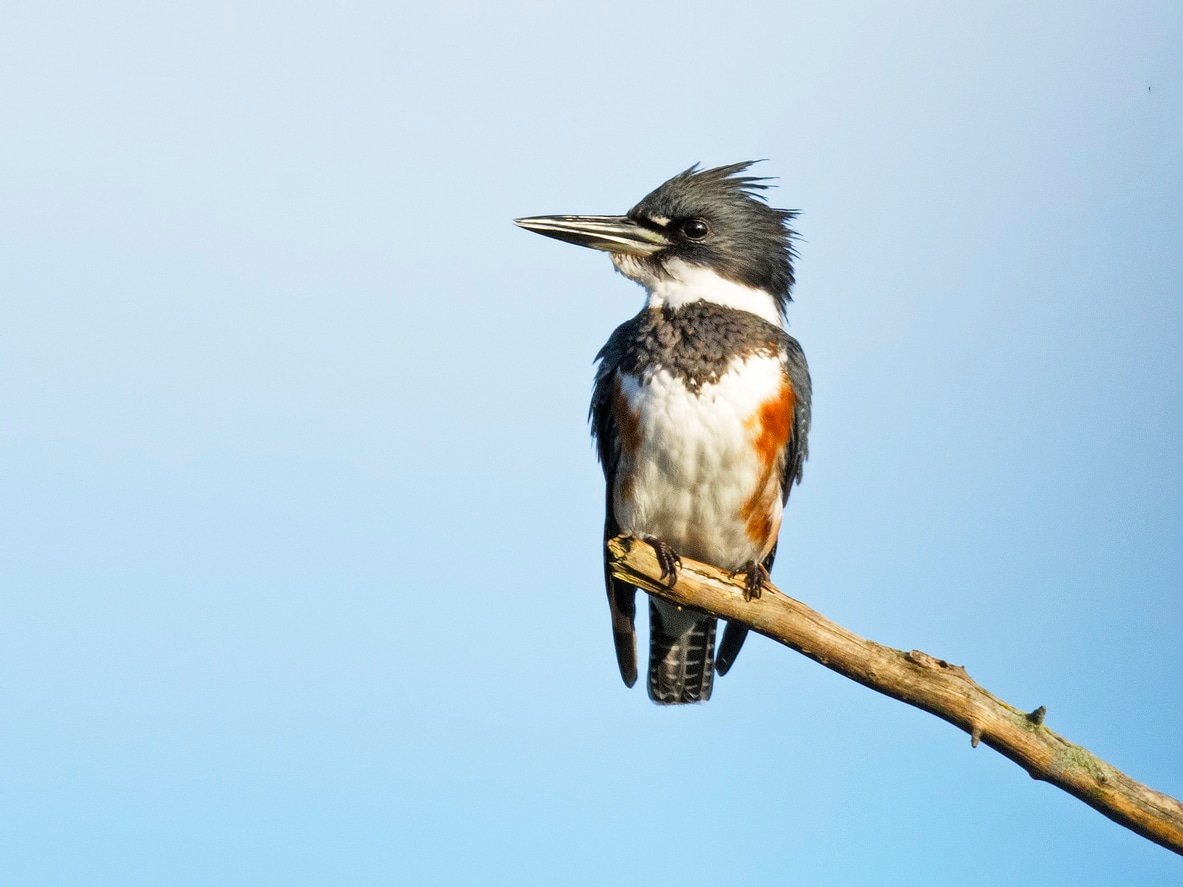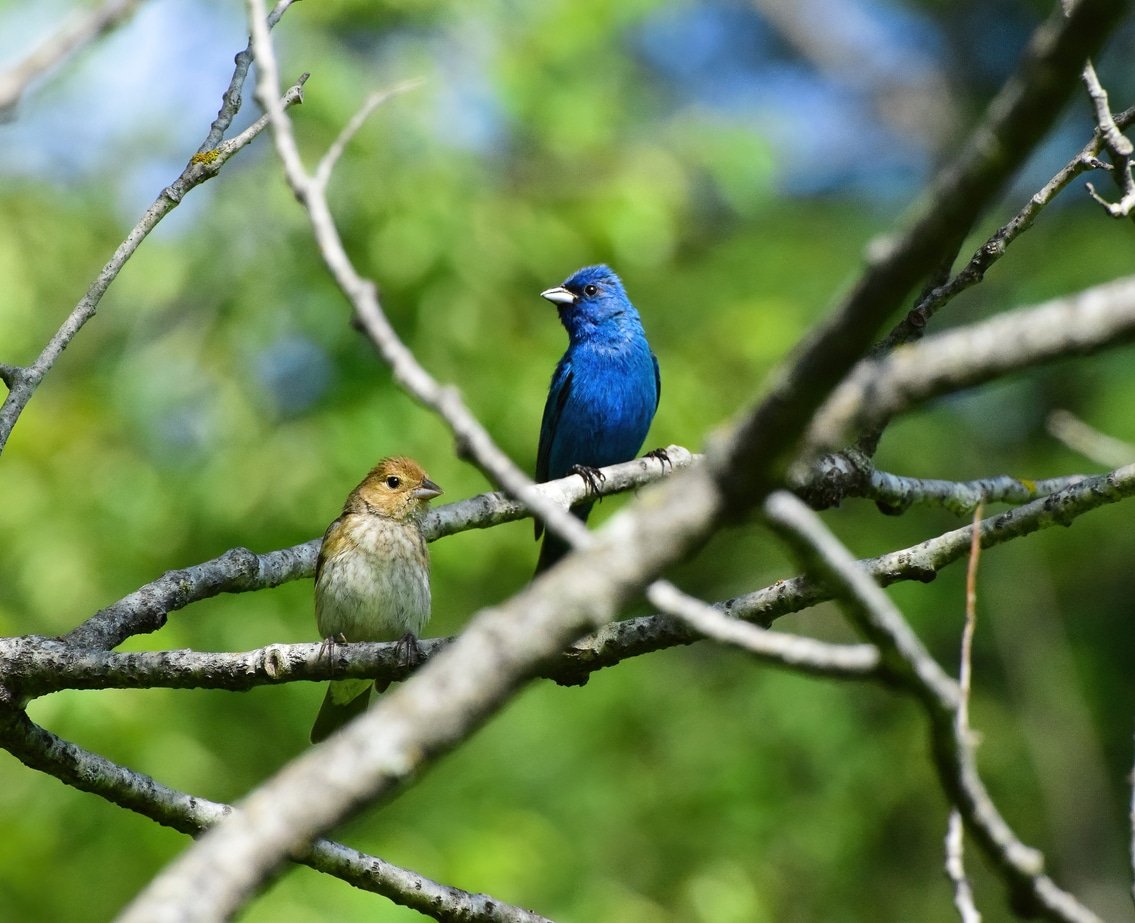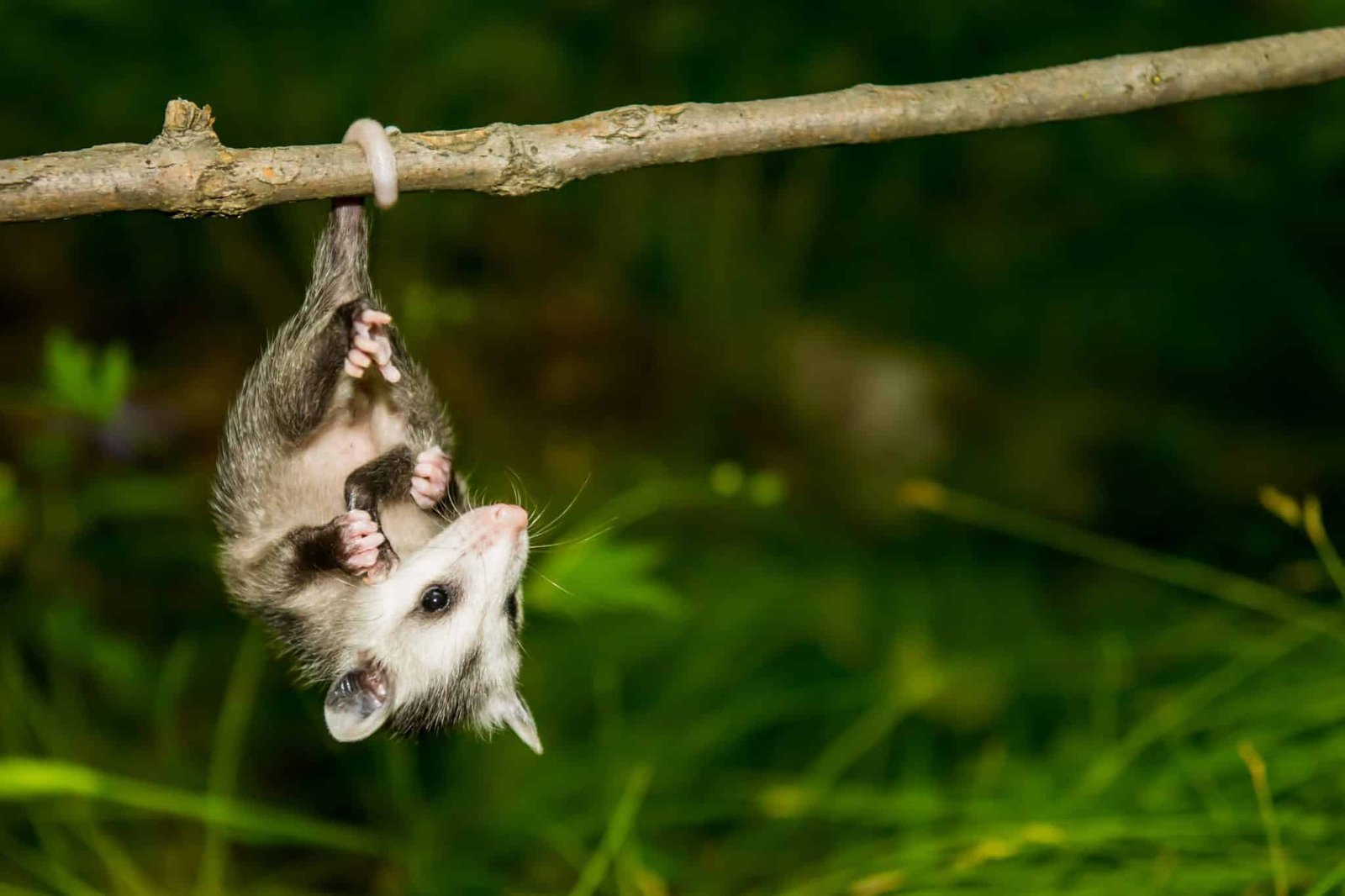Common, Rare & Colorful Birds of Northern Virginia: Photos, Where to Find Them & More!
Virginia has documented 475 different bird species, with approximately 375 at least sometimes active in the state, whilst around 100 are sadly now extinct or no longer visiting the state.
The birds of Northern Virginia are estimated at 300 different species, so you’ve got access to a vast range of birds in this region. Making Northern Virginia a perfect place to go birdwatching!
Whether you’re a keen birdwatcher or just interested in what birds you might see in your backyard, then follow along as we go through some of the most common, colorful, and rare birds of Northern Virginia. (Related: Common, Rare & Colorful Birds of Western Virginia).
We show you pictures, give information on what each bird is like and even some interesting facts!

The Most Common Birds in Northern Virginia
You’re going to see a considerable number of birds in Northern Virginia whether that’s your plan or not. And it’s very likely that you will see some of Northern Virginia’s most common birds when you’re out birdwatching or just enjoying a hike, so keep an eye out for these interesting birds year-round.
Common can be subjective to your location though you may not see too many Black Vultures, for example, flying around in larger cities.
1. Black Vulture
Black Vultures are one of the biggest birds you will see in Northern Virginia.
They can grow up to 29 inches long with a 66-inch wingspan, and can weigh up to 6.6 lbs. Its head is featherless, with a grey color and wrinkly appearance. The rest of its body has glossy black feathers.
Unlike most birds, you won’t hear the Black Vulture singing or making much noise at all, but they may hiss or grunt at attackers or while eating.
They also defecate on their legs on purpose to help them cool down! They can also regurgitate a putrid corrosive vomit that dissuades attackers and decreases weight for taking off from the ground. Charming.
Habitat
Black Vultures prefer dense forests to roost but like to scavenge for food along roads, fields, and other open spaces.
Your best chance for spotting a Black Vulture will be driving along any of the open roads across all of Northern Virginia that have forests next to them, especially where there may be roadkill available.
Endangered Status
Black Vultures are not endangered, but they are protected under various North American laws, making it illegal to take, kill, or even possess them without a specific permit.

2. Song Sparrow
Song Sparrows are medium-sized sparrows measuring up to 7 inches long with a 10-inch wingspan and weighing up to 53 grams. They have dark streaky brown upper feathers and white lower feathers with dark streaks.
They will forage on the ground for insects and seeds. But if they find any crustaceans in shallow water, they’re happy to eat those as well.
Habitat
Song Sparrows can live anywhere, but they prefer brush land and marshes, but they thrive when living near humans such as suburbs, agricultural fields, and near roads.
Endangered Status
Song Sparrows are not endangered and are one of the most common birds you will see throughout Virginia.

3. Killdeer
The Killdeer is a reasonably large shorebird, measuring up to 11 inches long with a 25-inch wingspan and weighing up to 121 grams.
Its upper feathers are primarily brown, its lower body, including chest and neck, are mostly white but they have black rings on their neck and upper chest.
Killdeer are very vocal with various calls for situations, and you’ll even hear them calling out in the night. One of its most common calls is where its name comes from thanks to their “kil-deer” vocalization.
They mostly feast on insects and go foraging at night to get more access to insects and stay clear of predators, including other birds like gulls and crows.
Habitat
Killdeer are permanent residents of Northern Virginia, and you’ll be able to find them around beaches or coastal areas, especially where there is short vegetation. They can also be found anywhere where there is standing water with short vegetation, including lakes or farms with large ponds.
Endangered Status
Killdeer are not endangered, and they have a large distribution with an estimated population of 1-2 million! Their population has shown a slight decline over recent years but not enough to be concerning.
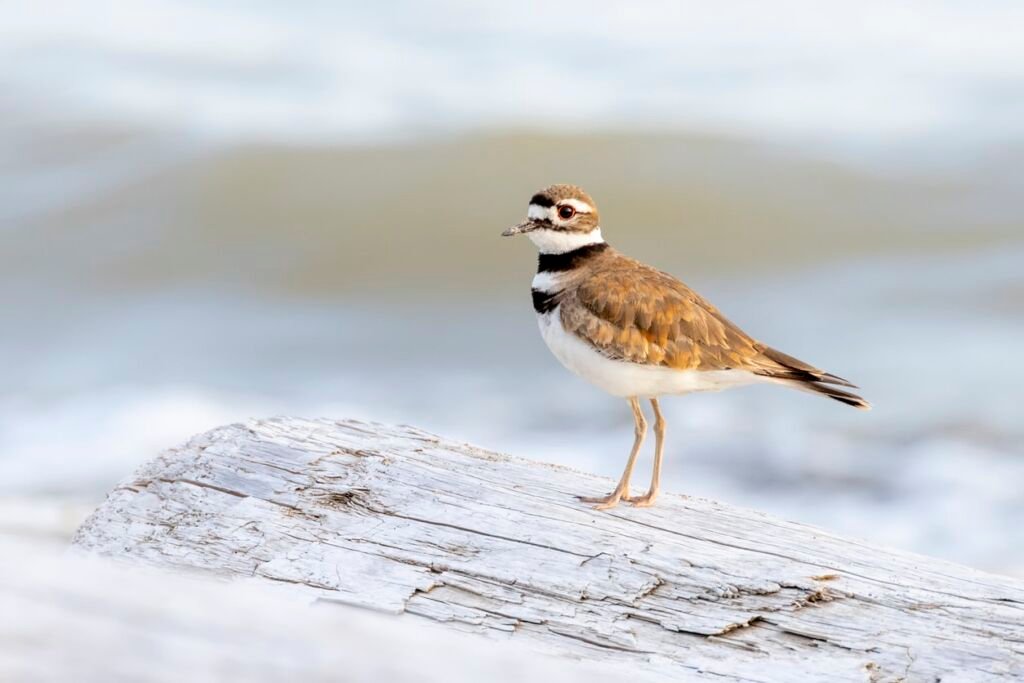
4. Tufted Titmouse
The Tufted Titmouse is a small songbird measuring up to 6 inches long with a 10-inch wingspan and weighing up to 26 grams. They have grey upper feathers with a white chest and belly and rusty colored sides. Above their black forehead is a tufted grey crest.
They will often raid backyard bird feeders and take the food away to store in their tree holes for fall and winter when it’s less available to them.
Unlike many other birds, Tufted Titmouse young can stay with their parents during the winter. Some may remain for an entire year!
Habitat
You’ll find the Tufted Titmouse flittering between tree branches in deciduous forests and mixed forests, and in local parks and gardens. As well as near any bird feeders people have set up.
Endangered Status
The Tufted Titmouse is not endangered and has an increasing population of 1.5% each year.

5. Belted Kingfisher
Belted Kingfishers are the only Kingfisher in the region and are a generally medium-sized bird at 14 inches long with a 23-inch wingspan and weighing up to 178 grams.
It has a large blue head with an equally large crest (or mohawk) that runs from its forehead to neck. Its upper feathers are blue, it has a large white collar, a large blue band across its chest, and the rest of it its underbody is white.
You’ll often see a Belted Kingfisher perched on low-lying branches watching the water, and as they see their prey, they will dive headfirst into the water to grab it. Favorite foods include fish, frogs, crustaceans, insects, small mammals, and even reptiles.
Habitat
The Belted Kingfisher are permanent residents of Northern Virginia. You will find them around any bodies of water such as lakes, rivers or along the coast.
Endangered Status
Belted Kingfishers are not endangered and have a widespread distribution across most of the Americas. Some areas may see fewer of them due to habitat loss, but overall, they are doing well.

6. Red-shouldered Hawk
The Red-shouldered Hawk is one of seven hawks in Northern Virginia. It’s on the medium size of them at 23 inches long with a 50-inch wingspan and weighing up to 2 lbs.
Its head is brownish with a red chest and shoulders, and its belly is a pale brownish-red color. Its upper feathers are a darker brown with pale or white splotches.
They will perch high up or soar over an area looking for prey. Once spotted with their keen eyes and hearing, they will dive at their prey, killing it. Their prey includes all kinds of smaller mammals such as rodents and even slightly larger ones, such as rabbits. They can also prey on other birds, especially during winter.
Habitat
Red-shouldered Hawks prefer hardwood forests with a somewhat open canopy giving them enough room to fly and maneuver for their prey. They can also be found in swamps and even mixed forests. You can also find them in some suburban areas that are close to forests where they can explore.
Endangered Status
Red-shouldered Hawks are not endangered and especially not in Northern Virginia.

7. Mourning Dove
Mourning Doves are one of the most common and widespread birds in North America. They’re a medium-sized dove measuring up to 12 inches long with an 18-inch wingspan and weighing up to 128 grams.
They’re a light grey-brown on their upper feathers with light pinkish lower feathers, black spots on their wings, and a white tail.
It’s one of the biggest gamebirds in the United States, and 20 million – 70 million are shot each year.
Habitat
Mourning Doves prefer open habitats such as urban parks, farms, prairies, grasslands and can sometimes be found in lightly wooded areas. They have adapted well to live in human-populated areas.
Endangered Status
Mourning Doves are not endangered, and the population is estimated to be 475 million.

The Most Colorful Birds of Northern Virginia
All birds have something unique and beautiful about them, but often the most colorful birds get the most attention. So we’re including a few of the most colorful birds in Northern Virginia for you to look for. Maybe you’ve already spotted one!
1. Purple Finch
Purple Finches are among the small forest birds, but their appearance is small and chunky. They can measure up to 6 inches long with a 10-inch wingspan and weigh up to 32 grams.
Both males and females have mixed dark brown on their backs and wings; the males have raspberry red on their heads, breasts, and across much of their upper feathers, with their lower feathers being white with light pink or red streaks.
Females are much more muted with light brown upper feathers, white lower feathers, and dark brown streaks throughout their entire body.
Habitat
The Purple Finch is a winter resident of Northern Virginia, preferring mixed forests and any kind of wooded area. As it becomes colder, they will spread out further in search of food, where any kind of shrub land, fields, or forest edges provides some food and shelter. You will also find them visiting backyard bird feeders that people put out for birds.
Endangered Status
Purple Finch are not endangered, and while somewhat rare in Northern Virginia a few years ago, they are starting to increase their winter population in the area and are becoming a more common sight.
2. Northern Cardinal
The Northern Cardinal is an extremely striking bright red bird and is Virginia’s official state bird. The bird gets its Cardinal name from Catholic cardinals who wear bright red robes.
It’s a medium-sized songbird measuring up to 9 inches long with a 12-inch wingspan and weighing up to 45 grams.
The males are almost exclusively bright red, with a black face mask covering the eyes and down to the upper neck. Its red does become slightly darker on its back and outward on its wings. The females are greyish-brown with a slight light red tinge to some feathers.
Habitat
Northern Cardinals are permanent residents of Northern Virginia and can be found throughout woodlands, gardens, parks, and wetlands. They will also be spotted in residential areas because they’re especially fond of bird feeders in people’s backyards.
Endangered Status
Northern Cardinals are not endangered and are one of the most common birds of Northern Virginia. And it’s estimated there are around 100 million of them globally!

3. Eastern Bluebird
Eastern Bluebirds are a small bird with a large head and plump little bodies; they can measure up to 8 inches long with a 13-inch wingspan and weigh up to 32 grams.
Males have a deep, bright blue back and head, with a rusty chest and neck. The rest of their lower body is white. Females are more subdued with a mostly greyish appearance with some hints of blue on their wings and reddish chest.
Most Eastern Bluebirds are very social, and you find them in flocks of 100! However, the friendliness subsides during mating season, where they will defend their territory from other Eastern Bluebirds.
Habitat
You’ll find Eastern Bluebirds in meadows and any areas with trees that offer holes for them to live in. However, with the introduction of birding and people putting up premade bird nests, they’re an easy bird to attract almost anywhere, and you’ll find them on golf courses and in backyards.
Endangered Status
Eastern Bluebirds are not endangered and are considered a very common bird throughout all of Northern Virginia.

4. Ruby-throated Hummingbird
Ruby-throated Hummingbirds are the most common hummingbird in the eastern states, including Virginia. It can grow to be 3.5 inches long with a wingspan of 4.3 inches and weigh up to 4 grams.
It has metallic green upper feathers, greyish white lower feathers, black wings, and a ruby-colored throat patch.
Interestingly enough, the ruby throat patch is highly directional, so it can appear black until you move to a different location where it will appear bright ruby red!
Habitat
Ruby-throated Hummingbirds prefer to breed in deciduous and pine forests towards the edges, as well as orchards and gardens. It does migrate during winter as far as Florida or Mexico.
Endangered Status
The Ruby-throated Hummingbird is not endangered and has an increasing population of around 36,000,000!

5. American Goldfinch
American Goldfinches are a small, brightly colored golden yellow finch with a black forehead and wings during mating season. But that molts to a much more muted brown color in winter.
The females are a lighter yellow during mating season and go to the same muted brown color during winter. They can grow to be 5.5 inches long with a 9-inch wingspan and weigh up to 20 grams.
During mating season, they are extremely aggressive towards anybody entering their territory; this includes both males and females.
Dominance during the non-mating season is determined by how many battles have been won. But American Goldfinches will flock together with other finches outside of breeding season without any issues.
Habitat
The American Goldfinch is found throughout residential areas as it is attracted to bird feeders many locals put out for them, as well as the planted grasses and perennial trees that produce seed heads that the bird wants to eat.
Endangered Status
American Goldfinches are not endangered and are very common throughout West Virginia.
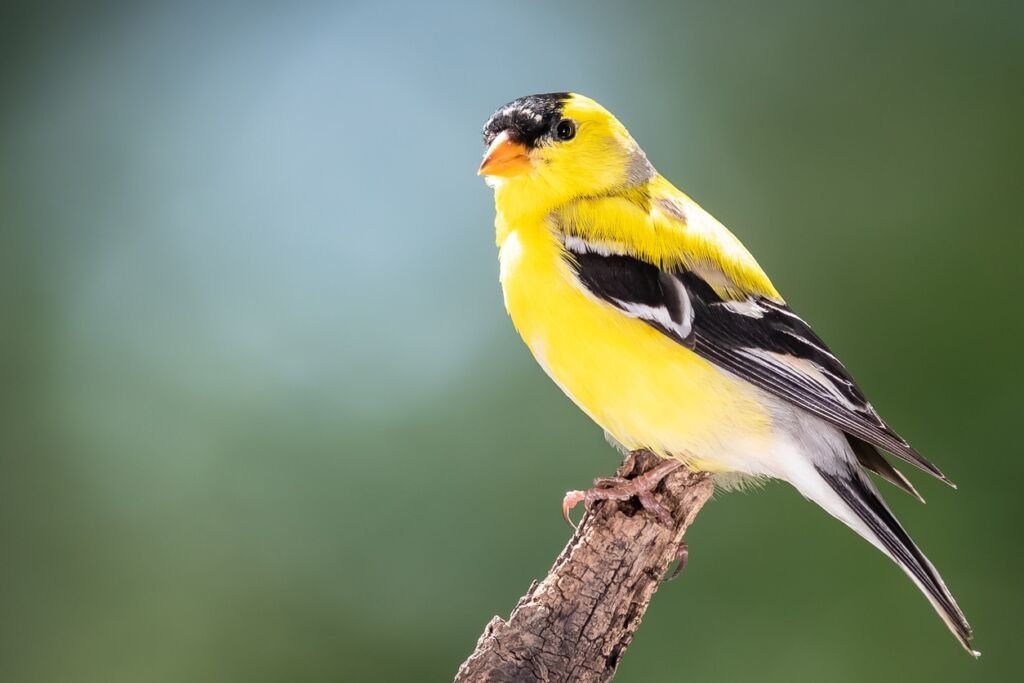
Northern Virginia’s Rarest Birds
While these birds may not be endangered, and you may see them in high numbers in other locations, seeing them in Northern Virginia can be a real unexpected treat.
But it does happen, so keep your eyes peeled for these great surprise guests to the region.
1. Red-breasted Nuthatch
Red-breasted Nuthatch are small songbirds measuring up to 4.5 inches long with a wingspan of 8.5 inches and weighing up to 10 grams. Its back and tail are a blueish-grey, and its under feathers are a rusty color, including its red breast area.
It will create its nest in deadwood, mainly near the ground, and will use a seed placed into cracks to then hammer an opening into the dead wood.
To protect against predators, they will apply conifer tree resin to the entrance of their nest holes so that predators have a more challenging time when trying to get inside. They’re very resourceful animals.
Habitat
Red-breasted Nuthatch can be found almost exclusively in conifer forests.
Endangered Status
Red-breasted Nuthatch are not endangered but they’re not a common sight around Northern Virginia. They sometimes visit, so consider yourself very lucky if you get a chance to see one.
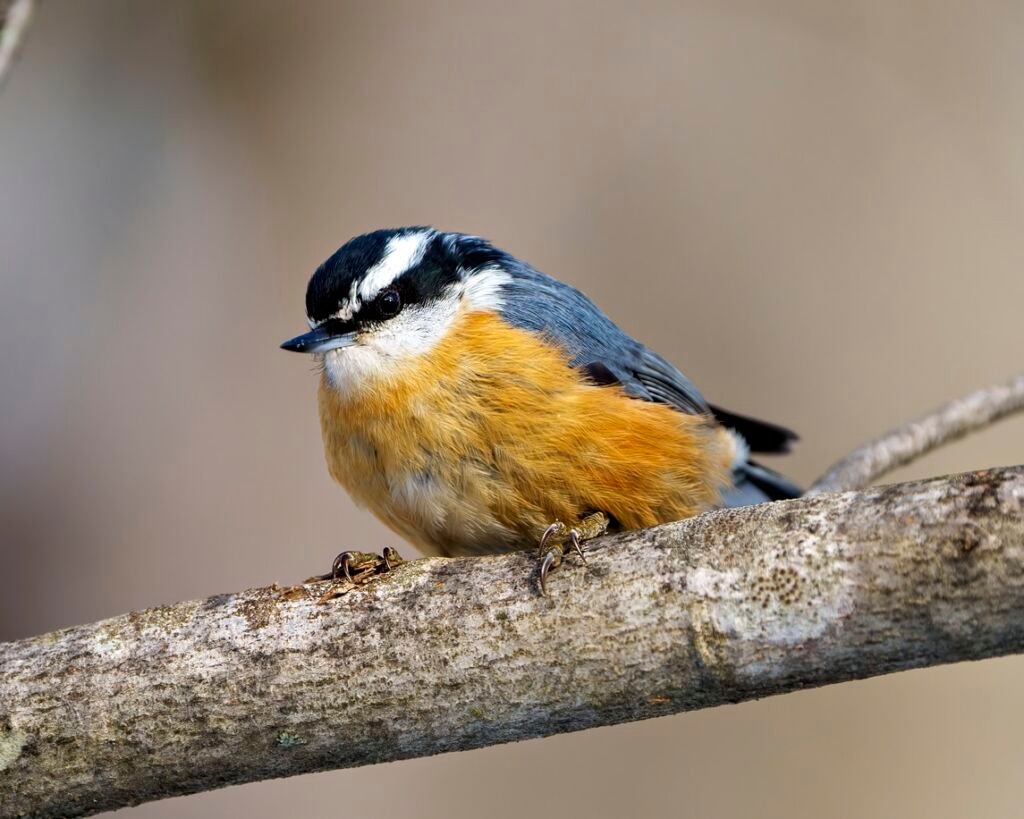
2. Orange-crowned Warbler
Orange-crowned Warblers are small songbirds found mainly in the western US and Canada, though they visit the east occasionally.
They can be up to 5 inches long with a 7-inch wingspan and weigh up to 9 grams. They have olive-grey upper feathers and yellowish under feathers, they may have an orange crown, but that often fades as they get older.
Males have a variable song they can sing, and neighboring males will often adopt or use the songs of each other. So you may find different areas having groups of males singing together.
Habitat
Their preferred habitat is low, dense shrubbery with open areas and forests nearby.
Endangered Status
Orange-crowned warblers are not endangered but are a rare visitor to Northern Virginia. They can be found at times, so keep an eye out for them during fall and spring.

3. Golden Eagle
The Golden Eagle is one of the fastest and deadliest raptors in North America. It has mostly dark brown feathers with some grey on its inner wings and a darker gold cap and neck where it gets its name from.
They can grow to be 40 inches long with a 7’8 wingspan and weighing up to 14 lbs, though some have grown even larger in captivity.
While the Golden Eagle prefers to eat smaller mammals like rabbits and ground squirrels, it can defend its young from bigger animals. It’s even been known to catch prey from larger animals such as coyotes or even bears.
Habitat
Golden Eagles will only be found during winter in the Coastal Plain and Piedmont areas. Although they’re very adaptable to habitat, especially during migration and winter months, they avoid urban areas and forested areas, preferring mountainous and rocky areas.
Endangered Status
Golden Eagles are not endangered. However, they are not a common sight within Northern Virginia and have been decreasing over the years, so they could be considered endangered for Northern Virginia specifically. There are estimated to be around 250,000 globally.



